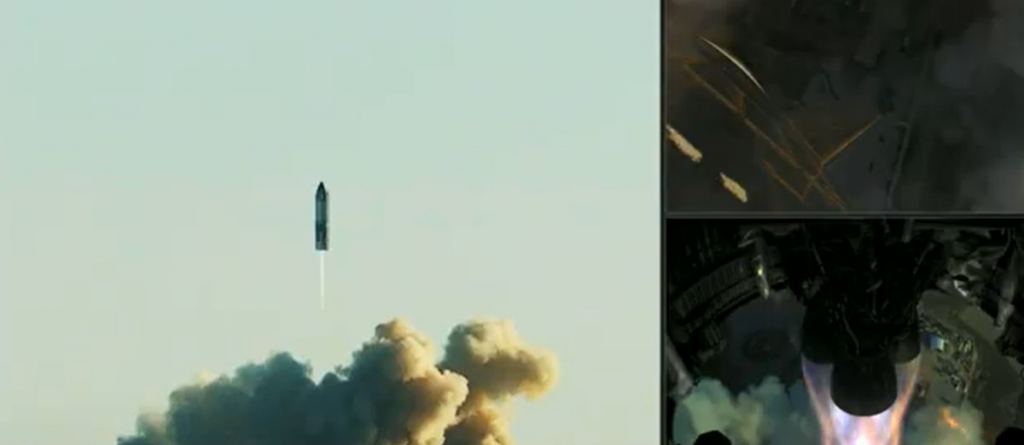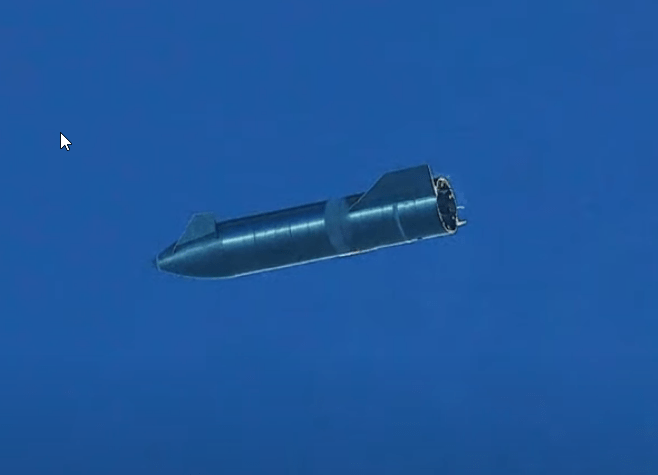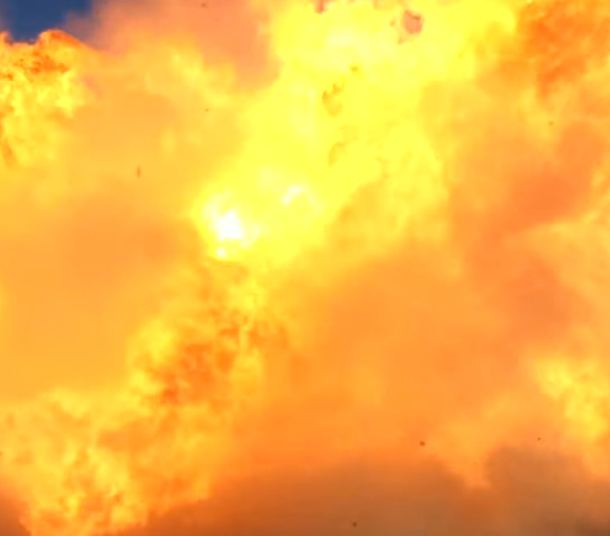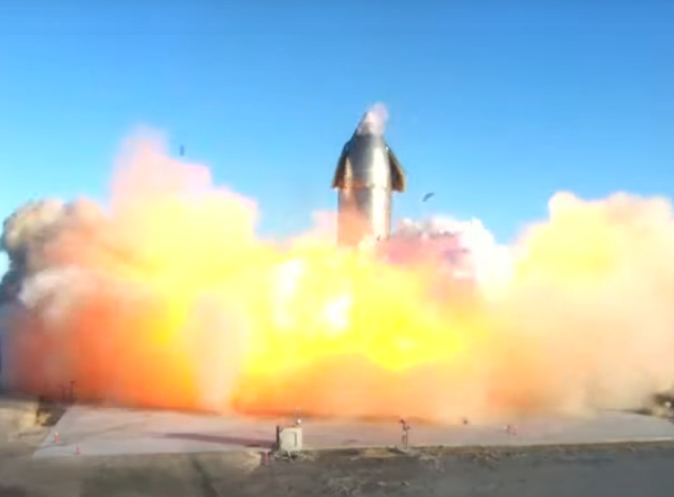At long last, SpaceX has conducted the first high-altitude test flight with its prototype Starship vehicle! During the launch, the eighth iteration of their spacecraft (SN8) flew to an altitude of 12.5 km (~7.8 mi; 41,000 ft) and conducted some fancy maneuvers before returning to its landing pad. Unfortunately, the landing was a bit hot and the SN8 exploded as soon as it touched down.
Despite failing to make it home in one piece (technically it did, but then exploded), the SN8 validated the Starship design for high-altitude flight, a major stepping stone towards spaceflight. What’s more, the data they gathered from this test and the failed landing is already being used to prepare for the next flight. So really, this test was a very important milestone on the road to conducting regular flights to the Moon and Mars.
The launch window opened this morning at 07:00 a.m. CST (08:00 a.m. EST; 05:00 a.m. PST) and was set to close at 05:00 p.m. CST (06:00 p.m. EST; 03:00 p.m. PST). An attempt was made yesterday (Tues, Dec.8th) but was scrubbed after a pre-flight engine issue led to an automatic shut down. Today’s launch was initially scheduled to happen at 03:00 p.m. CST (01:00 p.m. PST; 04:00 p.m. EST) but was aborted at 2m:12s before launch.

Ground crews called for a hold on the countdown (the apparent cause was that an airplane had entered the restricted airspace), and then reset the launch clock. A new launch was tentatively scheduled for 4:40 p.m. CST, just 20 minutes before today’s launch window would close. Just before 04:00 p.m. CST, the countdown resumed and by 04:45:26 p.m. CST (02:25:26 p.m. PST; 05:25:26 p.m. EST), the SN8 launched!
The launch began without incident as all three Raptor engines ignited and the Starship slowly lifting off the pad. SpaceX shared the entire event via live stream (see below) and caught everything with an exterior camera, a downward-facing camera mounted to the exterior of the Starship, and a third camera mounted inside the “skirt” (engine compartment).
At close to 4:42 minutes into the flight, the SN8 achieved its target altitude of 12.5 km (~7.8 mi; 41,000 ft) and the Raptor engines were shut off. The SN8 coasted in the air for a moment before commencing its descent and tilting its fuselage towards the ground. This was the much-anticipated “belly-flop” maneuver, which tested the spacecraft’s maneuvering flaps and aerodynamic surfaces.

The Starship then glided through the air for over a minute and made it most of the way back to the landing pad. The ground crews then reignited the three Raptor engines (6:25 mins after launch) which gimbled and fired to swing the tail section around swiftly. The last 17 seconds of the test consisted of the SN8 slowing to the point that it was able to make a soft landing.
Unfortunately, the SN8 was engulfed in flames immediately after touching down 6:42 mins after launch (at 04:52:08 p.m. CST) and then quickly exploded. With the exception of the external camera, all the video feeds cut out abruptly and after a few seconds, the smoke cleared to reveal a small pile of debris and much of the nose cone strewn across the pad. The live-feed concluded with the message:
“Awesome test, congrats Starship, steam! SN9 Up Next!”
Elon Musk took to Twitter about 10 minutes after the end of the flight to put the test (and its fiery finale) into context. First, he lauded the successes they had achieved with this latest run of the Starship, which included a “[s]uccessful ascent, switchover to header tanks & precise flap control to landing point.”

He also explained the reason why SN8 exploded immediately after it reached the landing pad:
“Fuel header tank pressure was low during landing burn, causing touchdown velocity to be high & RUD, but we got all the data we needed! Congrats SpaceX team hell yeah!!”
For the record, RUD stands for “Rapid Unscheduled Disassembly,” a term in aerospace engineering that is essentially code for “kaboom!” Nevertheless, Musk is certainly correct and there are plenty of reasons for SpaceX to be feeling celebratory right now. With the exception of coming in too fast and burning up on the landing pad, the SN8 managed to pull off everything it was supposed to for this flight test.
It made it to its apogee of 12.5 km, it was able to glide successfully through the atmosphere using nothing but its fins and surfaces, and it managed to reignite its engine just in time to flip around and land. As for the landing portion, Musk and his engineers now have the data they need to make sure the next flight test has more time to slow down.
And given SpaceX’s highly iterative rapid-prototyping approach, these failures can immediately be translated into success. SN9 is almost fully stacked and processed and is pretty much just waiting on the integration of its nosecone at this point. Barring any unforeseen delays, it could be ready to make a similar hop test in a few weeks’ time.
It’s impossible to say at this point if the SN9’s hop test will have a similar target altitude of 12.5 km or if it will attempt to reach higher. Originally, the high-altitude test was to reach an apogee of 20 km (~12.5 mi) above sea level, but that was reduced as the SN8 got closer to attempting it – first to 15 km (9.5 mi; 50,000 ft) and then to 12.5 km.
However, SpaceX is sure to push the envelope in the near future as they approach an orbital flight test. This will involve a Starship prototype attempting to reach an altitude of 200 km (~125 mi) with six Raptor engines. Musk also stated last week that he is “highly confident” the Starship will make a crewed mission to Mars by 2026. While this represents a delay of two years, it’s fair to say he’s still committed to a tight timetable!
In the meantime, several more prototypes (SN10 through SN15) are in various stages of manufacture and assembly and construction is well underway of the first Super Heavy prototype (the BN1). So expect plenty of news from Boca Chica in the coming months and years! And be sure to check out the video of the launch (the launch begins around 1h48m).
Further Reading: SpaceX

